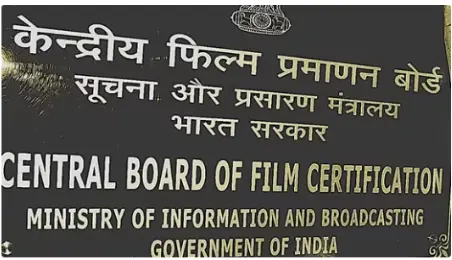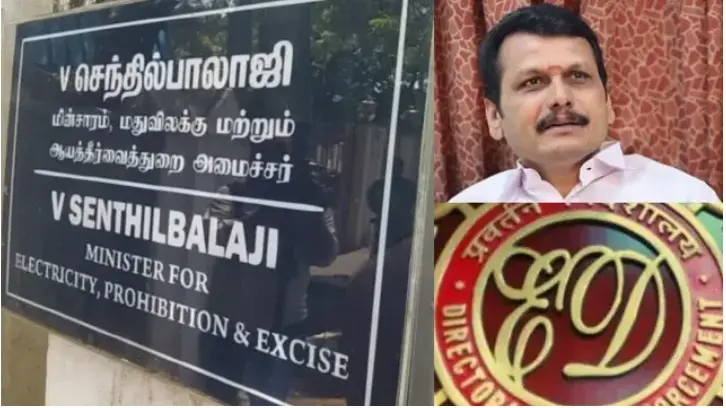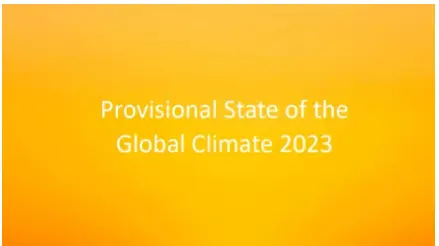Friday, 29th March 2024
The Motivation Behind Rohingya Refugees' Sea Journeys
In News: Last week, a tragic incident occurred off the Indonesian coast when a wooden boat carrying Rohingya refugees capsized, refocusing attention on their plight.
Rohingya Background
- The Rohingya are a Muslim minority ethnic group originating from Myanmar, formerly Burma.
- Despite their longstanding presence in Myanmar's Rakhine State, they face discrimination and persecution.
- Myanmar's government has denied them citizenship since 1982, rendering them stateless and deprived of basic rights.
- The violent expulsion of Rohingya in 2017 resulted in a massive refugee crisis, with hundreds of thousands fleeing to neighboring Bangladesh to escape persecution and brutality.
Rohingya in India
- India hosts a significant Rohingya population, estimated to be over 40,000 individuals.
- However, only around 14,000 Rohingya possess official refugee ID cards issued by the UNHCR, affording them some protection from arbitrary detention.
- Rohingya settlements can be found in various cities and states across India, including Jammu, Hyderabad, Delhi-NCR, Haryana, Uttar Pradesh, and Rajasthan.
Legal Situation in India
- India lacks specific legislation addressing the status and rights of refugees, including the Rohingya.
- Consequently, Rohingya refugees often face legal ambiguities and are frequently treated as illegal immigrants under existing laws.
- The authority to identify and deport foreign nationals, including Rohingya refugees, lies with the central government, state governments, Union Territories, and the Bureau of Immigration under the Foreigners Act, 1946.
Sea Route Migration
- Overcrowded and inhospitable conditions in refugee camps in Bangladesh push Rohingya to seek alternative routes for survival.
- Many Rohingya opt for perilous sea journeys across the Bay of Bengal and the Andaman Sea, hoping to reach Muslim-majority countries like Indonesia and Malaysia.
- Human traffickers exploit their desperation, charging exorbitant fees to ferry them on unseaworthy vessels, leading to horrific conditions and high mortality rates during the journey.
- Reports of abuse, including violence against women, are common, and many Rohingya do not survive the treacherous voyage.
Rising Death Toll
- The UN estimates that one in eight Rohingya attempting the sea route die or disappear, highlighting the extreme risks involved.
- Recent years have seen a significant increase in the number of Rohingya embarking on these perilous sea journeys, resulting in a corresponding rise in fatalities.
- In 2023, there was a 63% increase in deaths or disappearances compared to the previous year, making the Andaman Sea and Bay of Bengal among the deadliest stretches of water for refugees.
Source: TH
Google DeepMind’s SIMA and AlphaGeometry
In News: Google DeepMind recently unveiled several AI products leveraging Predictive AI Models, including SIMA (Scalable Instructable Multiworld Agent) and AlphaGeometry.
AI Applications in Diverse Fields
- SIMA - AI Agent for Gaming
- SIMA differs from general AI models like OpenAI's ChatGPT or Google's Gemini.
- It can independently process data and take actions, enhancing the gaming experience.
- Trained by Google DeepMind across various video games to perform tasks ranging from exploration to construction.
- AlphaGeometry - Specialized AI for Geometry
- Developed by DeepMind, AlphaGeometry is tailored for complex geometric reasoning tasks.
- It combines neural language models with symbolic deduction engines for precise reasoning.
- Evaluated using geometry problems from the International Mathematical Olympiads, showcasing impressive performance comparable to human gold medallists.
Predictive AI Models in Action
- Volcanic Ash Monitoring
- Companies like Yandex employ advanced mathematical models and neural networks for real-time monitoring of volcanic ash dispersion.
- Enables swift responses to ashfall, ensuring public safety and safeguarding infrastructure.
- Oil and Gas Exploration
- Major companies like Shell and Saudi Aramco utilize AI algorithms for upstream and midstream operations.
- Predictive models analyze data to optimize extraction methods, reduce costs, and improve subsurface imaging.
- Medicine Research
- Deep neural networks aid drug discovery by assessing chemical compound properties and targeting diseases.
- Initiatives like the EU's MELLODDY Project enhance predictive models through federated learning while ensuring data privacy.
India's Initiatives in Generative AI
- Generative AI Report and Participation in GPAI
- INDIAai conducted studies and roundtable discussions to examine Generative AI's impact and ethical considerations.
- India joined the GPAI alliance to establish frameworks for responsible technology use.
- Fostering AI Ecosystem
- The Indian government invests in research, supports startups, and promotes AI education to foster an AI ecosystem.
- National Strategy for Artificial Intelligence aims to develop an ecosystem for AI research and adoption.
- National Mission on Interdisciplinary Cyber-Physical Systems
- Establishes Technology Innovation Hubs at institutions like IIT Kharagpur to train professionals in AI and Machine Learning.
- AI Research Platform
- A Cloud computing platform aims to position India as a leader in AI among emerging economies, transforming sectors like education, health, and agriculture.
|
UPSC Previous Year Questions Prelims (2020) Q. With the present state of development, Artificial Intelligence can effectively do which of the following?
Select the correct answer using the code given below: (a) 1, 2, 3 and 5 only Ans: (b) |
Source: IE
Sickle Cell Disease - Edukemy Current Affairs
In News: With essential drugs for Sickle Cell Disease (SCD) treatment unavailable at district healthcare institutions, there's a rising worry regarding the hurdles encountered by marginalized Indigenous Tribal communities in handling SCD treatment.
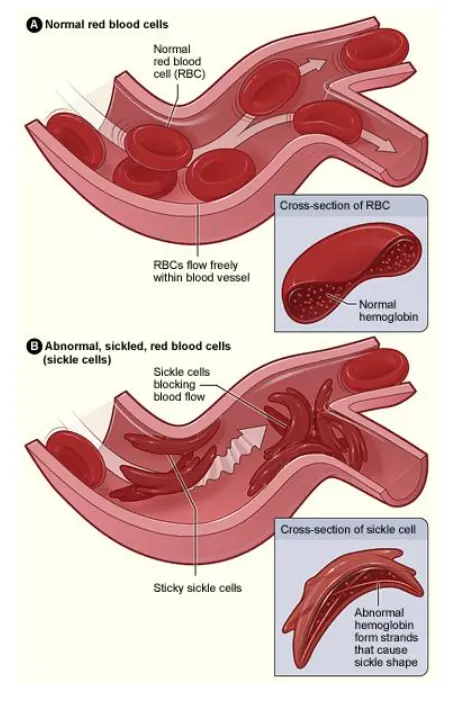
Understanding Sickle Cell Disorder
Description
- Sickle Cell Disease (SCD) is a hereditary haemoglobin disorder characterized by a genetic mutation causing red blood cells (RBCs) to take on a sickle or crescent shape rather than their normal round shape.
- This alteration leads to increased rigidity, hindering effective circulation and resulting in complications such as anaemia, organ damage, severe pain episodes, and reduced lifespan.
Vulnerability of Tribal Populations
Marginalized tribal communities are particularly susceptible to SCD, as highlighted by the Ministry of Health and Family Welfare.
Common Symptoms
Symptoms include chronic anaemia leading to fatigue and weakness, painful episodes (sickle cell crisis) affecting bones and extremities, and delayed growth and puberty.
Treatment Approaches
- Blood Transfusions: Used to alleviate anaemia and reduce pain crises.
- Hydroxyurea: Medication aimed at decreasing painful episodes and preventing long-term complications.
- Gene Therapy: Includes bone marrow or stem cell transplantation, with methods like Clustered Regularly Interspaced Short Palindromic Repeats (CRISPR) being explored.
India's Sickle Cell Disease Status
India ranks third globally in SCD births, with a significant portion occurring in tribal communities.
Challenges in Treatment and Accessibility
- Limited Awareness: Lack of understanding leads to delayed diagnosis and inadequate treatment.
- Inadequate Healthcare Infrastructure: Rural areas lack specialized facilities and trained personnel.
- High Treatment Costs: Financial burden for families due to medication costs and hospitalizations.
- Limited Access to Medications: Inconsistent availability of essential drugs in certain regions.
- Inadequate Screening Programs: Absence of systematic newborn screening and early detection initiatives.
- Geographical and Socioeconomic Barriers: Challenges in accessing healthcare due to remoteness and economic factors.
Government Initiatives
- National Sickle Cell Anaemia Elimination Mission: Aims at reducing disease prevalence through screening and awareness campaigns.
- National Health Mission (NHM): Focuses on raising awareness and facilitating early detection and treatment.
- Research Initiatives: Including gene-editing therapies and stem cell research for SCD treatment.
- State-Level Programs: Such as the State Haemoglobinopathy Mission of Madhya Pradesh, targeting screening and management challenges.
Way Forward
- Early Detection and Screening: Strengthen genetic counselling and testing programs.
- Public Education and Awareness: Implement sustained awareness initiatives and involve communities in discussions.
- Research and Development: Allocate resources for ongoing research to develop more effective treatment options and cures.
- Comprehensive Healthcare Access: Ensure equitable access to healthcare services for better long-term health outcomes.
|
UPSC Previous Year Questions Prelims (2023) Q. Consider the following statements in the context interventions being undertaken under Anemia Mukt Bharat Strategy:
How many of the statements given above are correct? (a) Only one Ans: (c) Mains (2021) Q. What are the research and developmental achievements in applied biotechnology? How will these achievements help to uplift the poorer sections of society? |
Source: TH
Plastic Waste Management (Amendment) Rules 2024
In News: Recently, the Ministry of Environment, Forest and Climate Change of India has introduced amendments to the Plastic Waste Management Rules, 2016, via the Plastic Waste Management (Amendment) Rules, 2024.
Key Highlights of the Plastic Waste Management (Amendment) Rules 2024
- Definition of Biodegradable Plastics
- Biodegradable plastics are now defined as materials capable of degradation by biological processes in specific environments like soil and landfill, without leaving any microplastics.
- Microplastics, which are solid plastic particles insoluble in water and range from 1 micron to 1,000 microns in size, pose significant pollution risks to rivers and oceans.
- Microplastics Testing
- The rules do not specify which chemical tests can establish the absence of microplastics or the extent to which microplastics must be reduced for elimination.
- Expansion of "Importer" Definition
- The definition now encompasses imports of various plastic-related materials such as packaging, carry bags, sheets, raw materials, and intermediate materials used in plastic manufacturing for commercial purposes.
- Inclusive Definition of "Manufacturer"
- The scope now includes those engaged in the production of plastic raw materials, compostable plastics, and biodegradable plastics, reflecting a broader range of entities covered under this term.
- Extension of "Producer" Scope
- Beyond manufacturing plastic packaging, it now includes the production of intermediate materials used in plastic packaging and contract manufacturing for brand owners.
- Certification Requirement
- Manufacturers are allowed to produce carry bags and commodities from compostable or biodegradable plastics and must obtain a certificate from the Central Pollution Control Board (CPCB) before marketing or selling their products.
Other Initiatives to Curb Plastic Waste
- Swachh Bharat Mission: A nationwide cleanliness campaign aimed at eliminating open defecation and improving waste management practices.
- India Plastics Pact: A collaborative initiative bringing together businesses, governments, and NGOs to create a circular economy for plastics.
- Project REPLAN: A project focused on reducing plastic waste through research, policy advocacy, and community engagement.
- Un-Plastic Collective: An initiative fostering innovation and collaboration to address plastic pollution and promote sustainable alternatives.
- GoLitter Partnerships Project: A program working with local communities and stakeholders to prevent littering and promote responsible waste management practices.
|
UPSC Previous Year Questions Prelims (2019) Q. In India, ‘extend producer responsibility’ was introduced as an important feature in which of the following? (a) The Bio-medical Waste (Management and Handling) Rules, 1998 (b) The Recycled Plastic (Manufacturing and Usage) Rules, 1999 (c) The e- Waste (Management and Handling) Rules, 2011 (d) The Food Safety and Standard Regulations, 2011 Ans: (c) Prelims (2018) Q.2 How is the National Green Tribunal (NGT) different from the Central Pollution Control Board (CPCB)?
Which of the statements given above is/are correct? (a) 1 only Ans: (b) Prelims (2019) Q. Why is there a great concern about the ‘microbeads’ that are released into environment? (a) They are considered harmful to marine ecosystems. (b) They are considered to cause skin cancer in children. (c) They are small enough to be absorbed by crop plants in irrigated fields. (d) They are often found to be used as food adulterants. Ans: (a) Mains (2018) Q: What are the impediments in disposing the huge quantities of discarded solid waste which are continuously being generated? How do we remove safely the toxic wastes that have been accumulating in our a habitable environment? |
Source: TH
Shiv Shakti
In News: The landing site of Chandrayaan-3's Vikram lander has been officially named 'Statio Shiv Shakti' by the International Astronomical Union (IAU) working group for Planetary System Nomenclature.

Significance of ‘Station Shiv Shakti’
- The Prime Minister highlighted the significance of the "Shiv Shakti" point on the moon, symbolizing a connection spanning from the Himalayas to Kanyakumari.
- "Shiv" denotes determination for the betterment of humanity.
- "Shakti" represents the strength to achieve these resolutions.
Other Key Locations
- The location of Chandrayaan-2's lander crash in September 2019 was previously designated by the Prime Minister as "Tiranga Point."
- Former President A.P.J. Abdul Kalam proposed naming the site where the Chandrayaan-1 moon impact probe landed in November 2008 as "Jawahar Point."
Source: TH
South East Africa Montane Archipelago
In News: A recent investigation conducted in southern Africa has revealed a significant amount of previously undiscovered biodiversity within a recently acknowledged ecological region known as the South East Africa Montane Archipelago (SEAMA).

Overview of the South East Africa Montane Archipelago (SEAMA) and Inselbergs
- SEAMA Description
- Recognized as a newly identified mountainous ecoregion.
- Extends from northern Mozambique to Mount Mulanje in Malawi, encompassing 30 granitic inselbergs rising over 1000 meters above sea level.
- Hosts the largest (Mt Mabu) and smallest (Mt Lico) mid-elevation rainforests in southern Africa, along with unique montane grasslands.
- Environmental Conditions of SEAMA
- Exhibits significantly higher annual rainfall and humidity, especially during the dry season, compared to surrounding areas.
- Endemic Species
- Home to a diverse array of endemic taxa, including 127 plant species, 45 vertebrates (amphibians, reptiles, birds, mammals), and 45 invertebrate species (butterflies, freshwater crabs).
- Two endemic genera of plants and reptiles have been identified in this region.
- Factors Contributing to Endemism
- Endemic species arose from divergence events, coinciding with the repeated isolation of the mountains from pan-African forests.
- The region's age and relatively stable climate also played a role in fostering endemism.
- Deforestation Trends
- Since 2000, SEAMA has experienced a significant loss of primary humid forest cover, with deforestation rates reaching up to 18% and in some areas up to 43%—among the highest in Africa.
- Slash-and-burn shifting agricultural practices, along with charcoal production, are identified as major causes of montane forest loss.
Definition and Characteristics of Inselbergs
- Inselbergs, also known as Monodnocks, are isolated, steep-sloped ridges, hills, or small mountains that rise above surrounding plains.
- They resemble islands emerging from a sea of flat terrain.
- Typically composed of harder igneous rock, such as granite, inselbergs are erosion-resistant landforms that can persist for millions of years.
- Erosional processes are mainly active along valley sides and floors in inselberg landscapes, while the inselbergs themselves remain relatively unchanged over time.
Source: DTE
Afanasy Nikitin Seamount
In News: India has recently submitted an application to the International Seabed Authority (ISBA) to obtain exploration rights for two extensive areas in the seabed of the Indian Ocean, encompassing a cobalt-rich crust historically identified as the Afanasy Nikitin Seamount (AN Seamount).
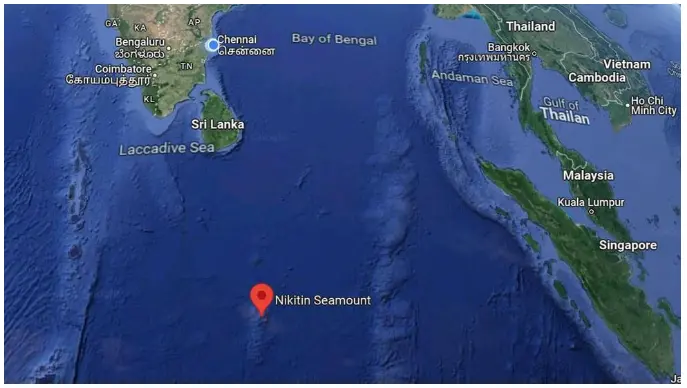
Insights into Afanasy Nikitin Seamount and Seamounts in General
- Afanasy Nikitin Seamount (AN Seamount) is a structural feature located in the Central Indian Basin, approximately 3,000 km from India's coast.
- AN Seamount spans 400 km in length and 150 km in width, featuring a main plateau rising 1200 m above the surrounding ocean floor, which is situated at 4800m depth. Additionally, it comprises secondary elevated seamount highs.
- Rich deposits of cobalt, nickel, manganese, and copper are found within the AN Seamount.
- Seamounts are underwater mountains formed through volcanic activity, typically near mid-ocean ridges, intraplate hotspots, or oceanic island chains with volcanic and seismic activity.
- Seamounts serve as hotspots for marine life, offering unique ecosystems and biodiversity.
- They provide valuable insights into the composition of the Earth's mantle and the evolution of tectonic plates.
- Seamounts play a crucial role in understanding ocean circulation patterns and their impact on heat and carbon dioxide absorption.
- Seamounts facilitate localized ocean upwelling, where nutrient-rich water from deep within the ocean rises to the surface, making them favorable environments for various forms of marine life.
Source: TH
Solar and Heliospheric Observatory
In News: A comet was recently identified in an image captured by the Solar and Heliospheric Observatory (SOHO) spacecraft by a citizen scientist.
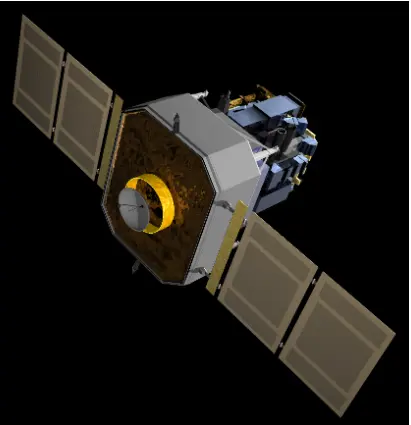
Overview of the Solar and Heliospheric Observatory (SOHO)
- The Solar and Heliospheric Observatory (SOHO) is a collaborative project between the European Space Agency (ESA) and the U.S. National Aeronautics and Space Administration (NASA).
- Launched in December 1995, SOHO's primary objective is the study of the Sun.
- To ensure continuous observations, SOHO was positioned in orbit around the first Lagrangian point (L1), situated approximately 1.5 million km (900,000 miles) from Earth toward the Sun. This location allows a small body to remain relatively stationary relative to both the Earth and the Sun due to the combined gravitational forces.
- Equipped with 12 scientific instruments, SOHO conducts research on various aspects of the solar atmosphere, helioseismology, and the solar wind.
- Data collected from SOHO has significantly contributed to scientists' understanding of the Sun's internal structure, dynamics, chromosphere, corona, and solar particles.
- Initially scheduled to operate until 1998, SOHO has surpassed expectations and continues to gather valuable data, leading to numerous new discoveries, including the identification of thousands of comets.
- SOHO holds the distinction of being the longest-operating satellite dedicated to observing the Sun.
Source: NASA
Quantum Cryptography
In News: Researchers are advocating for the adoption of quantum cryptography, a novel technology aimed at safeguarding confidential communications.
Overview of Quantum Cryptography
- Quantum cryptography, also referred to as quantum encryption, utilizes the inherent properties of quantum mechanics to safeguard and transmit data in a manner that is impervious to hacking.
- It ensures complete security, preventing compromise without the knowledge of the message sender or receiver.
- Data encoded in a quantum state cannot be copied or viewed without alerting the parties involved.
- The method employs individual particles of light, known as photons, to transmit data through fiber optic wires.
Process
- Quantum cryptography complements traditional cryptography by facilitating a more secure exchange of encryption keys rather than replacing it.
- While the capacity for data transmission is not extensive or rapid, it boasts high levels of security.
- Optimal speed, scalability, and security are achieved by transmitting the secret key using quantum encoding, while the data itself is encoded and transmitted using conventional methods and algorithms.
Benefits of Quantum Cryptography
- Ensures Secure Communication: Quantum cryptography relies on the laws of physics, offering a sophisticated and secure encryption method compared to traditional encryption techniques.
- Detects Eavesdropping: Attempts by third parties to intercept encoded data result in changes to the quantum state, alerting users to potential eavesdropping.
- Offers Diverse Security Methods: Various quantum cryptography protocols, such as QKD, can be employed and combined with classical encryption methods to enhance security.
Source: LS
Treasury Bills
In News: Recently, the Government of India, in collaboration with the Reserve Bank of India, released the schedule for issuing Treasury Bills for the quarter ending June 2024.
Overview of Treasury Bills
- Nature: Treasury bills, commonly known as T-bills, are considered money market instruments.
- Issuer: These short-term debt instruments are issued by the Government of India.
- Maturity Period: Currently, treasury bills are issued in three maturity periods: 91-day, 182-day, and 364-day durations.
- Interest Mechanism: T-bills are zero coupon securities, meaning they do not pay any interest. Instead, they are issued at a discount and redeemed at face value upon maturity.
- Eligible Buyers: Individuals, trusts, institutions, and banks have the option to purchase T-Bills. However, they are primarily held by financial institutions.
- Role in Financial Market: Apart from being investment instruments, T-bills play a crucial role in the financial market. Banks often utilize them to obtain funds through repo transactions with the Reserve Bank of India (RBI). Additionally, T-bills can be held by banks to meet their Statutory Liquidity Ratio (SLR) requirements.
Functionality of T-Bills
- Issuance and Redemption: Treasury bills are initially issued at a discounted price and redeemed at face value upon maturity. Example: For instance, a Rs 100 treasury bill may be acquired at Rs 95, but upon maturity, the holder receives Rs 100.
- Returns: The return on investment from treasury bills is influenced by the liquidity conditions prevailing in the economy. During periods of liquidity crises, the returns tend to be higher, and conversely, lower during times of ample liquidity.
Source: PIB
U.N. Security Council’s call for a Gaza ceasefire
In News: A recent article outlines the US support for the first UN Security Council Resolution calling for an immediate ceasefire in Gaza, passed with a 14-0 majority on March 25, 2024.
Introduction
The abstention by the US in the recent UNSC resolution marks a significant shift in its stance on the Israel-Palestine conflict. While critics argue that the resolution's non-binding nature diminishes its impact and view the move as a political strategy ahead of elections, it underscores growing tensions between the US administration and Israel's government.
US Role in UNSC Resolution
- The US abstained after vetoing three previous draft resolutions calling for a ceasefire.
- Subsequently, the Israeli Prime Minister cancelled a trip by a delegation to Washington, holding that the United States has abandoned its policy in the UN.
Resolution Passed by UNSC
- All members of the UNSC (except US), including Britain, which until now had resisted calls to back a ceasefire, voted for the resolution.
- Israel responded unhappily, blasting the resolution, for not conditioning a ceasefire on the release of Israeli hostages in the control of Hamas.
Israel's Response to Ceasefire Resolution
- Rather than respect the US’ stated “red line”, that Israel must not engage in a ground offensive, Israel has doubled down on its rhetoric.
- In fact, it has denied even the principle of a two-state solution.
Options Available to Israel
Instead of keeping the country in the permanent state of war, Israel shall take the message from the UNSC seriously, stop the war, allow urgent humanitarian assistance into Gaza and continue talks with Hamas through international mediators for both the release of all hostages and the withdrawal of his troops from the enclave.
India's Role in Promoting a Balanced Approach
- The world at large needs to come together for a peaceful solution but the reluctance of the Israeli government and other involved parties have aggravated the issue more.
- Thus, a balanced approach would help to maintain favourable relations with Arab countries as well as Israel.
- India has continuously maintained good rapport with Middle-Eastern countries and Israel, which it can capitalize effectively.
- India was re-elected to the Human Rights Council for the 2022-24. India should use these multilateral forums to act as a mediator to resolve the Israel-Palestine issue.
|
UPSC Previous Year Questions Prelims (2015) Q. Which one of the following countries of South-West Asia does not open out to the Mediterranean Sea? (a) Syria (b) Jordan (c) Lebanon (d) Israel Ans: (b) Mains (2019) Q1. ‘Too little cash, too much politics, leaves UNESCO fighting for life.’ Discuss the statement in the light of US’ withdrawal and its accusation of the cultural body as being ‘anti-Israel bias’. Mains (2018) Q2. “India’s relations with Israel have, of late, acquired a depth and diversity, which cannot be rolled back.” Discuss. |
Source: TH
Share the article
Edukemy’s Current Affairs Quiz is published with multiple choice questions for UPSC exams
MCQ
Get Latest Updates on Offers, Event dates, and free Mentorship sessions.

Get in touch with our Expert Academic Counsellors 👋
FAQs
UPSC Daily Current Affairs focuses on learning current events on a daily basis. An aspirant needs to study regular and updated information about current events, news, and relevant topics that are important for UPSC aspirants. It covers national and international affairs, government policies, socio-economic issues, science and technology advancements, and more.
UPSC Daily Current Affairs provides aspirants with a concise and comprehensive overview of the latest happenings and developments across various fields. It helps aspirants stay updated with current affairs and provides them with valuable insights and analysis, which are essential for answering questions in the UPSC examinations. It enhances their knowledge, analytical skills, and ability to connect current affairs with the UPSC syllabus.
UPSC Daily Current Affairs covers a wide range of topics, including politics, economics, science and technology, environment, social issues, governance, international relations, and more. It offers news summaries, in-depth analyses, editorials, opinion pieces, and relevant study materials. It also provides practice questions and quizzes to help aspirants test their understanding of current affairs.
Edukemy's UPSC Daily Current Affairs can be accessed through:
- UPSC Daily Current Affairs can be accessed through Current Affairs tab at the top of the Main Page of Edukemy.
- Edukemy Mobile app: The Daily Current Affairs can also be access through Edukemy Mobile App.
- Social media: Follow Edukemy’s official social media accounts or pages that provide UPSC Daily Current Affairs updates, including Facebook, Twitter, or Telegram channels.


